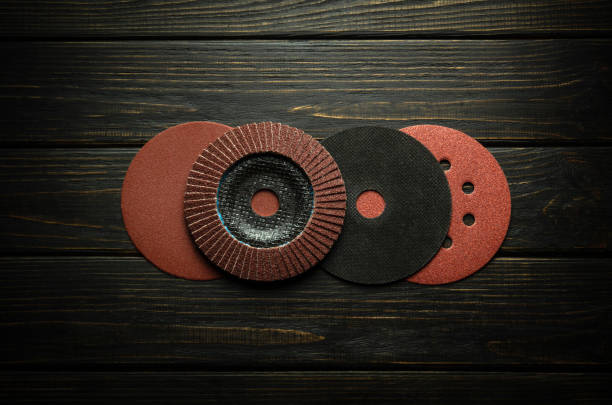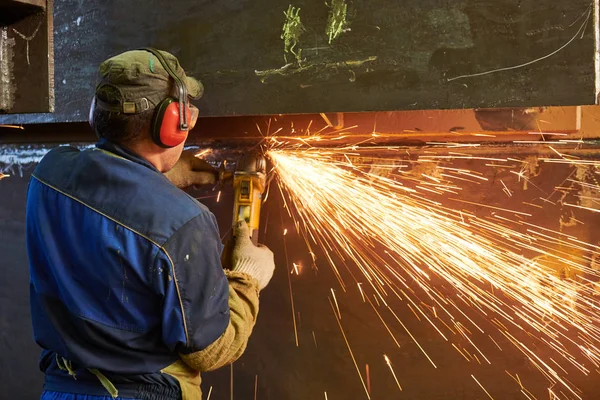Abrasives are materials used to shape or finish a workpiece through rubbing, which leads to part of the workpiece being worn away by friction. They play a vital role in a wide array of industrial processes. The industrial applications of abrasives are numerous and varied, encompassing activities such as grinding, polishing, cutting, and finishing in multiple industries. This article delves into the significant industrial applications of abrasives, examining their roles in manufacturing, construction, automotive, electronics, and other sectors.
Manufacturing
In the manufacturing sector, abrasives are crucial for machining processes, which include grinding, honing, lapping, and superfinishing. These processes are essential for achieving the precise dimensions and surface finishes required for industrial components.
Grinding
Grinding is one of the most common abrasive processes in manufacturing. It is used to remove excess material from a workpiece, shape it, or achieve the desired surface finish. Abrasive grinding wheels, made from materials like aluminum oxide, silicon carbide, or cubic boron nitride, are employed in grinding operations. They are used to produce parts for machinery, automotive components, and tools, ensuring high precision and fine surface quality.
Honing
Honing is a finishing process that uses abrasive stones to improve the geometric form of a surface. It is often used to create the final bore diameter in engine cylinders and other precision components. The process can remove minute material amounts, enhance surface finish, and correct shape imperfections, resulting in improved performance and longevity of the components.
Lapping and Superfinishing
Lapping and superfinishing are ultra-precision finishing processes used to achieve exceptionally smooth and accurate surfaces. These processes involve the use of fine abrasive compounds or bonded abrasive tools to remove very small amounts of material. They are commonly used in the production of high-precision components, such as bearings, seals, and hydraulic systems, where smooth surfaces are critical for proper functioning.
Construction
The construction industry heavily relies on abrasives for various applications, from cutting and shaping building materials to finishing surfaces.
Cutting and Shaping
Abrasive cutting tools, such as diamond saw blades and abrasive wheels, are widely used in the construction industry to cut and shape hard materials like concrete, stone, and metal. Diamond abrasives, in particular, are highly effective due to their hardness and durability. They enable precise cutting of materials used in constructing buildings, bridges, roads, and other infrastructure projects.
Surface Preparation
Surface preparation is a critical step in construction projects, and abrasives play a key role. Abrasive blasting, also known as sandblasting, involves propelling abrasive materials like sand, steel grit, or aluminum oxide against a surface to clean, roughen, or smooth it. This process is used to remove rust, paint, and other contaminants from surfaces before applying coatings, ensuring proper adhesion and longevity of the coatings.
Polishing and Finishing
Polishing and finishing are essential for achieving aesthetic and functional qualities in construction materials. Abrasive polishing pads and compounds are used to achieve smooth and shiny surfaces on materials like marble, granite, and concrete. These polished surfaces enhance the visual appeal of buildings and other structures while providing durability and ease of maintenance.
Automotive
The automotive industry extensively utilizes abrasives in the production, repair, and maintenance of vehicles.
Manufacturing and Machining
In automotive manufacturing, abrasives are used for machining engine components, transmission parts, and other critical components. Precision grinding and honing processes ensure that these parts meet the strict tolerances required for optimal performance. Abrasive tools are also used in the production of brake systems, where precise dimensions and surface finishes are crucial for safety and functionality.
Surface Preparation and Finishing
Abrasives play a significant role in surface preparation and finishing in the automotive industry. Before painting or coating, car bodies and parts are often subjected to abrasive blasting to remove rust, old paint, and contaminants. This process ensures a clean and smooth surface for applying coatings, resulting in better adhesion and a high-quality finish. Additionally, abrasives are used in polishing operations to achieve a glossy and smooth appearance on car exteriors and interiors.
Repair and Maintenance
In automotive repair and maintenance, abrasives are indispensable for tasks such as grinding, sanding, and polishing. Mechanics use abrasive tools to remove damaged or worn-out material, smooth rough surfaces, and restore components to their original condition. Abrasive pads, discs, and compounds are employed in bodywork repairs, engine rebuilding, and brake system maintenance, contributing to the longevity and performance of vehicles.
Electronics
The electronics industry relies on abrasives for precision manufacturing and finishing of electronic components and devices.
Wafer Fabrication
In semiconductor manufacturing, abrasives are used in wafer fabrication processes, including grinding, lapping, and polishing. Silicon wafers, the foundation of electronic devices, require extremely smooth and flat surfaces for optimal performance. Abrasive grinding wheels and polishing pads are used to achieve the required surface quality and thickness, ensuring the proper functioning of integrated circuits and other electronic components.
Component Finishing
Abrasives are also essential in finishing electronic components, such as connectors, terminals, and circuit boards. Abrasive processes like precision grinding and polishing are used to achieve precise dimensions and smooth surfaces, ensuring reliable electrical connections and signal transmission. These processes contribute to the overall performance and reliability of electronic devices, from smartphones to advanced computer systems.
Aerospace
The aerospace industry demands high precision and reliability in the production of aircraft components, and abrasives are vital in meeting these requirements.
Precision Machining
Abrasives are used in precision machining processes to produce critical aerospace components, such as turbine blades, engine parts, and landing gear. These components must withstand extreme conditions and perform flawlessly. Abrasive grinding, honing, and superfinishing processes ensure that the components meet stringent tolerances and surface finish requirements, enhancing their durability and performance.
Surface Treatment
Surface treatment processes in aerospace, such as shot peening and abrasive blasting, are used to improve the fatigue strength and corrosion resistance of components. Shot peening involves bombarding the surface with small abrasive particles to create compressive stresses, enhancing the material’s resistance to cracking and fatigue. Abrasive blasting is used to clean and prepare surfaces for coatings, ensuring optimal adhesion and protection against environmental factors.
Medical Devices
The medical device industry relies on abrasives for manufacturing and finishing medical instruments, implants, and prosthetics.
Implant Manufacturing
Abrasives are used in the production of medical implants, such as hip and knee replacements, dental implants, and surgical instruments. Precision grinding and polishing processes ensure that these implants have the required dimensions and surface finishes for biocompatibility and functionality. Smooth surfaces are crucial for minimizing friction and wear, reducing the risk of complications, and improving the longevity of the implants.
Instrument Finishing
Medical instruments, including scalpels, forceps, and needles, require sharp edges and smooth surfaces for effective and safe use. Abrasive processes like grinding and polishing are used to achieve the desired sharpness and finish. These processes ensure that the instruments can perform precise and delicate procedures, contributing to successful medical treatments and surgeries.
Other Applications
In addition to the industries mentioned above, abrasives find applications in various other sectors.
Woodworking
In woodworking, abrasives are used for sanding and finishing wood surfaces. Sandpaper, abrasive belts, and discs are employed to smooth rough edges, remove imperfections, and achieve the desired surface texture. These processes are essential for producing high-quality furniture, cabinetry, and other wood products.
Glass and Ceramics
The glass and ceramics industry uses abrasives for cutting, grinding, and polishing glass and ceramic materials. Diamond abrasives are particularly effective for cutting and shaping glass, while abrasive compounds are used to polish and smooth surfaces. These processes are critical for producing items like optical lenses, glassware, and ceramic components.
Metalworking
In metalworking, abrasives are used for cutting, grinding, and finishing metal parts. Abrasive cutting wheels, grinding wheels, and sanding discs are employed to shape and finish metal components used in machinery, tools, and structural applications. These processes ensure precise dimensions and smooth surfaces, contributing to the performance and longevity of metal products.
Conclusion
Abrasives are indispensable in numerous industrial applications, playing a critical role in shaping, finishing, and improving the performance of materials and components. From manufacturing and construction to automotive, electronics, aerospace, medical devices, and beyond, abrasives are essential for achieving the precision, surface quality, and functionality required in modern industrial processes. As technology advances, the development of new abrasive materials and techniques will continue to drive innovation and improve the efficiency and quality of industrial operations across various sectors.


